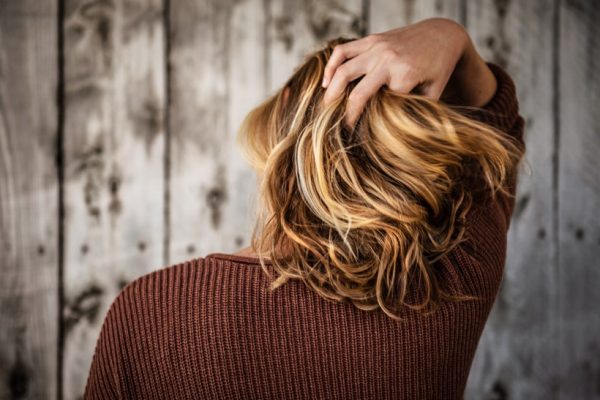
Hair dyeing precautions
Hair dyeing is fashionable and is a good idea to cover up the gray hair. But, hair dyeing should be done properly. Choosing a proper hair dye is very important for the skin, hair and eyes. Hair dyeing is a common practice in both men and women. The chemical make up hair dyes varies. Most of the time people who use hair dyes get exposed to chemicals through the skin contact. The three types of (main) hair dyes are:
Temporary hair dye: These cover the surface of hair but do not penetrate in to hair shaft. This type will last till one or two hair washings.
Semi-permanent dyes: These penetrate the hair shaft and typically last for about five to ten hair washings.
Permanent hair dyes: Also known oxidative hair dyes cause lasting chemical changes to hair shaft. These types are most popular because once applied to hair, the color change last until the hair replaced by new hair growth. These are also known as coal-tar dyes. Chemical composition of these dyes includes phenols and aromatic amines.
Both semi-permanent and permanent dyes pose concern of cancer risk. Darker the dyes, more chemical ingredients that might cause cancer.
.
How people exposed to hair dyes?
By hair dyeing, some of the chemicals present in can be absorbed through the skin or inhalation of fumes. Even the hairdressers and hair stylists who are exposed to hair dye while handling customers are also exposed to hair dye fumes.
Some of the risks or using hair dye or dying hair are:
- Allergies: Presence of Paraphenylnediamine which is one of the components in hair dye is an allergen. People who suffer from eczema and psoriasis must opt out of hair dyes that contain this allergen. It causes itching, redness, skin irritation and sometimes swelling.
- Asthma: Hair dyes with persulfate can aggravate asthma thus causing breathing problem, coughing and asthma attacks. Those who suffer from asthma should check the label for such ingredients that could cause attacks.
- Skin rashes and irritation: Itching, discomfort, burning sensation, rashes are due to dye reaction with skin. If there are any allergens in the hair dye that can cause reaction to your skin, stop using it.
- Hair quality: Repeated use of permanent dye could cause damage to hair. The texture of hair could spoil and change in pH of scalp can result in dry hair as well as hair fall.
- Cancer: Researches have looked at the link between hair dye and the risk of leukemia and lymphomas as well as bladder cancer. According to cancer research, over the years hair dye composition has changed and all hair dyes does not have same composition. Early hair dyes that had aromatic amines as one of the ingredients were found to cause cancer in lab animals. Over the years composition of hair dyes changed by manufacturers. Studies carried out in people revealed that- people who are exposed to hair dye constantly (like hair stylists, hair dressers and barbers) are at increased risk of bladder cancer. Studies on leukemia and lymphomas have revealed, women who use darker dyes could be at risk of developing non-Hodgkin lymphoma or leukemia. Presence of resorcinol in certain hair dye can lead to breast cancer.
- Conjunctivitis: When dye comes in contact with eyes it could cause inflammation in eye and could result in itchiness and eyes turn red and person can experience pain in eye. The risk of infection is high with allergic reaction. It can harm the eyes and can cause blindness.
- Skin irritation: Both skin and nails can show reaction to hair dye. Skin discoloration is a possibility. Nails can get brittle.
Precautions:
- Use semi-permanent or temporary hair dyes to prevent side effects of hair dyes
- Before buying hair dye – understand the hair dye composition. Check the label for allergens and get to know your allergens.
- Do a patch test on the skin before using hair dye
- Use gloves while applying the hair dye
- Don’t leave the hair dye on your hair any longer than recommended time
- Rinse and wash your scalp using water after dyeing hair.
- Follow the instructions in the box. If you develop any reactions, contact your doctor.
- Do not mix different hair dyes as it could cause severe chemical reactions.
- Do not dye your eyebrows and eyelashes.
- If your scalp has wounds, then avoid coloring hair. Some hair dyes contain lead acetate that could cause irritation.
- If you are pregnant, talk to your doctor about precautions and hair dyeing.
- Use natural colors such as Henna and amla (Indian gooseberry) powder, tea, cumin coloring, lemon and honey (for lightening the hair), carrot and beetroot juice, black walnuts (to cover gray hair) – are some of the safe and natural ways to color the hair.
Over the years compositions of the hair dyes has been changed. However, the chemicals or ingredients present in hair dyes could be still strong for our system. Understanding chemical compositions, taking precautions before coloring the hair could help in preventing any adverse side effects.
Image credit: Photo by Tim Mossholder on Unsplash
References: www.werindia.com, www.instylie.com
Author: Sumana Rao | Posted on: November 11, 2021
« Fifteen Health Tips For Eating Out Include buddies in your weight loss program »






















Write a comment